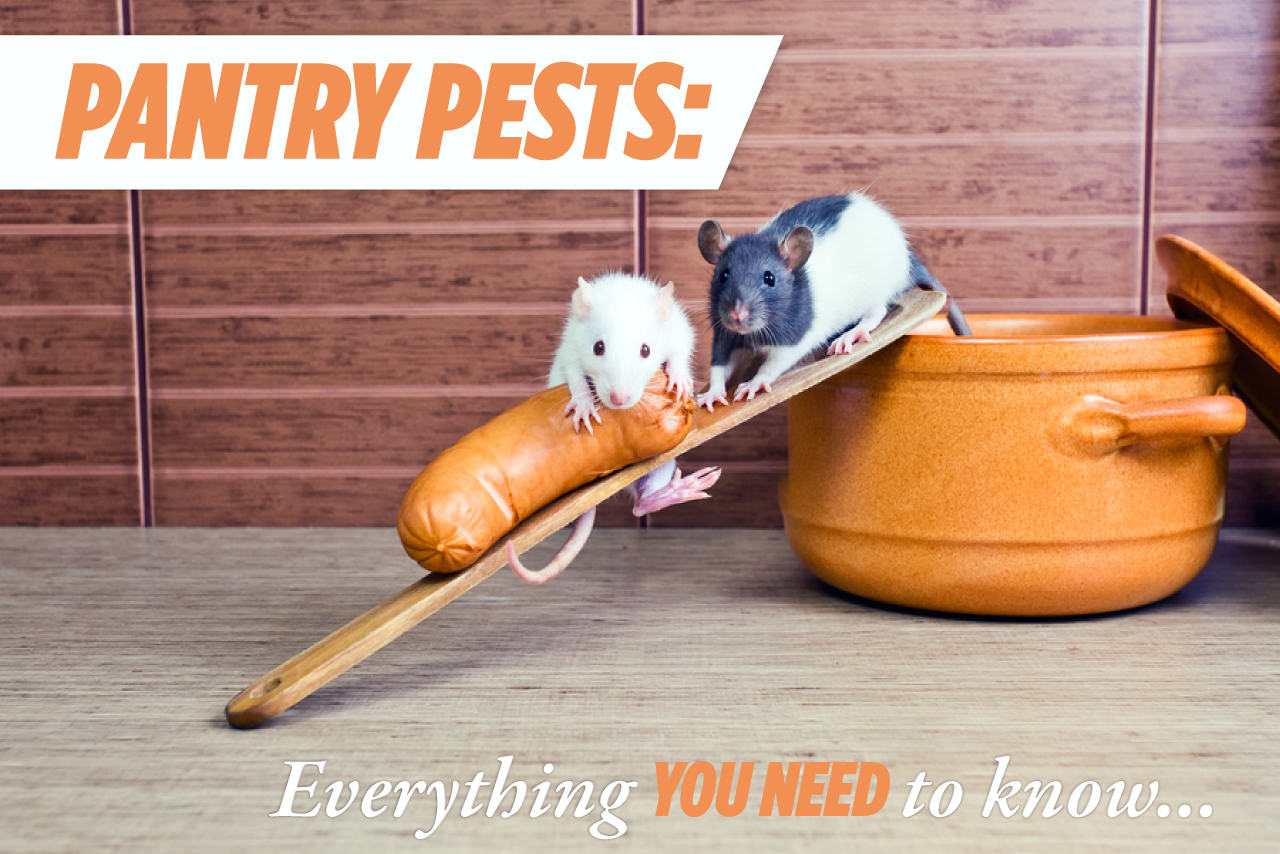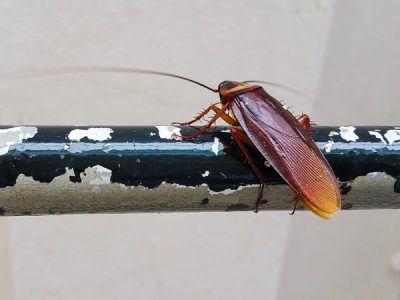[fullwidth_text alt_background=”none” width=”2/3″ el_position=”first”]
Pantry Pests:
Everything You Need to Know
This fluffy little rodent looks adorable right? Maybe, but it’s not so cute when it’s devouring the contents of your pantry. There are several common pests that can effortlessly infiltrate your pantry; not only do they spoil and contaminate food products, but they also place your family at risk of contracting various illnesses.
Rodents
When it comes to rodents in the pantry, it is typically smaller mice that are most common. They leave a variety of tell-tale signs such as black droppings in the shape and size of rice grains. There will also be noticeable gnawing on the corners of cereal boxes, often with a trail of food spreading along the shelf. Even un-opened, perfectly sealed products are not safe from mice. Their sharp incisors will easily chew through any cardboard or plastic in order to obtain a food source.
Beetles
The most common pantry beetles are weevils, the warehouse beetle, saw-toothed grain beetle, merchant grain beetle, confused flour beetle, red flour beetle, drugstore beetle, and cigarette beetle. These beetles are most commonly transported into your pantry through already infested food, but because they are so small, they remain unnoticed until they begin breeding.
Moths
There are two main pantry moths: the Indian Meal moth and the Mediterranean Meal moth. If you spot even one moth when you open the pantry cupboard, rest assured that there are more of them currently hatching somewhere inside one of your grains, cereals or flours. You may notice tiny light-coloured worm-like larvae or eggs and you may also see signs such as spun webbing through the food and on packaging. One female moth can lay up to 650 small white eggs at a time.
Cockroaches
Cockroaches carry diseases such as salmonella and dysentery, so you definitely do not want them anywhere near your food products. Their presence is difficult to detect as they very rarely leave a noticeable trail of food. They will however excrete a brownish liquid known as ‘scent marks’ along walls and floors. This scent trail will also leave a musty smell strong enough for humans to smell.
Solutions for keeping your pantry pest free
- Inspect weather stripping, door sweeps and window screens. Make sure that there are not open gaps for pests to enter when they detect a food source.
- Make sure that your home is professionally pest controlled annually.
- Check packaging thoroughly when purchasing pantry food items.
- Don’t hoard expired products as the rotting scent is detectable to pests long before we notice it.
- Unpack your pantry and wipe down all surfaces with a disinfectant or bleach at least once a month. Always check that sauce bottles have not leaked as this will instantly attract pests.
- Keep your pantry ventilated and dry.
- Purchase a variety of plastic containers with well-sealing lids. Label each container with the product name and the date, and then ensure that any opened food items are stored in these containers.
Keeping your pantry clean and pest free is far less hassle than ridding your home of the pests once they have already infiltrated. But do not despair, if you already face an infestation, contact us for fast, professional and quality pest control service. Related article: Spring Cleaning Your Home
[/fullwidth_text]







